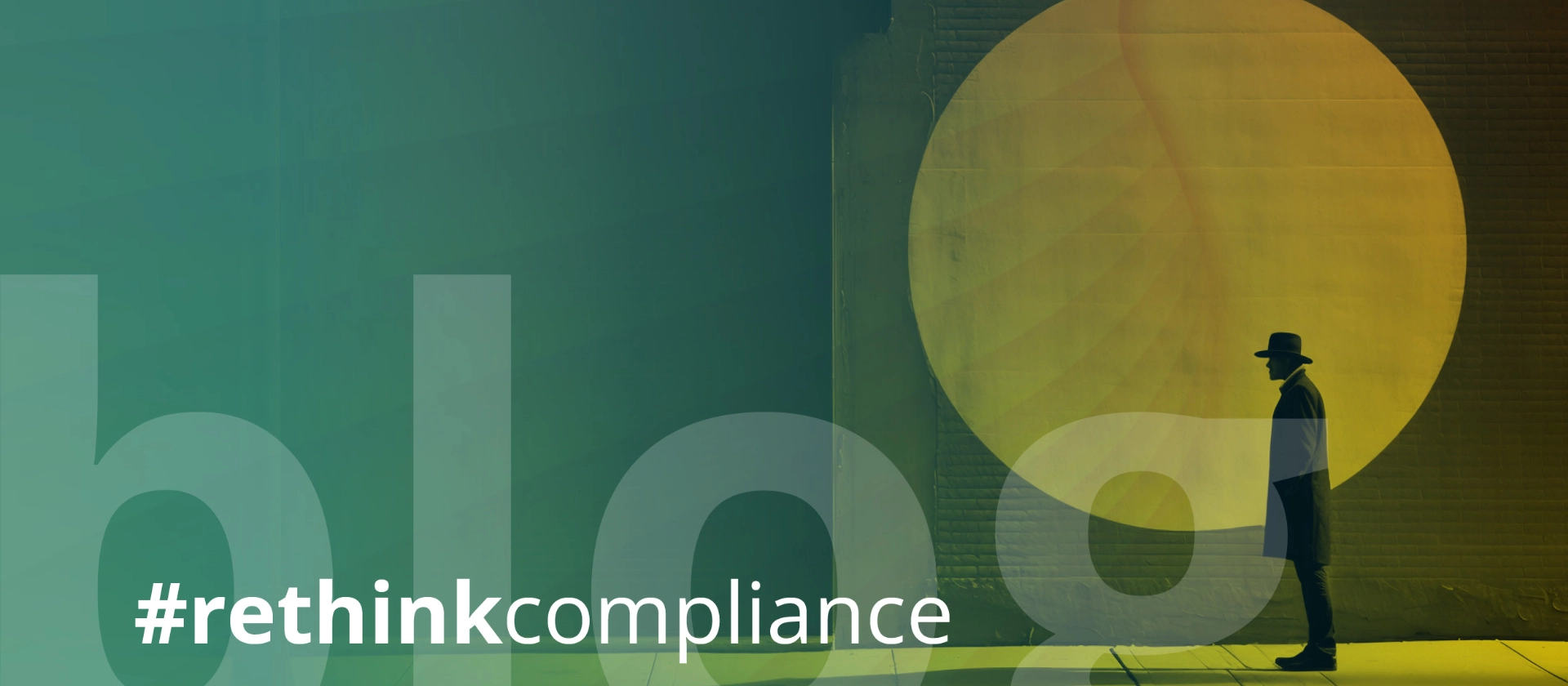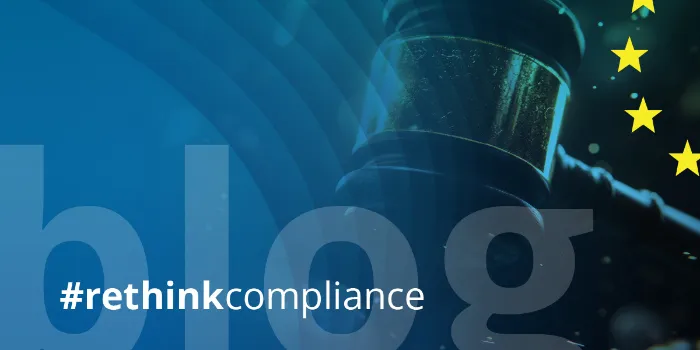

Russia’s Long Shadow
#rethinkcompliance Blog | Post from 16.12.2021
The National Situation Report on Organised Crime 2020, published by the German Federal Criminal Police Office (BKA), puts Russian-Eurasian organised crime back in the spotlight. In the following, we will take a detailed look at this and at those countries in which Russian influence is still noticeable to this day due to their special geographical location and history.
The legacy of the Soviet Union reverberates. How do you come to this realisation? By reading the current BKA report on organised crime (OC), which devotes a separate chapter to the topic of REOC. REOC stands for Russian-Eurasian Organised Crime.[1] In order to do justice to this topic, it is important to begin by briefly discussing the ideology that shapes REOC groups. This is the so-called ideology of “thieves in law” – an explicitly granted formal and special status of a “criminal authority” or a professional criminal. This person occupies a special position among initiated criminals in the world of organised crime or even correctional institutions, and then also exercises informal authority over members of lower status. A subculture of its own exists, which formed a specific code of values and norms during the Soviet era and to which the syndicates of the post-Soviet states feel bound.[2] The post-Soviet states are, as the name suggests, the successor states of the former Soviet Union and include a total of 14 other states in addition to the Russian Federation: The Baltic states (Estonia, Latvia and Lithuania), but also Belarus, Ukraine, Moldova, Georgia, Armenia, Azerbaijan and finally Kazakhstan, Kyrgyzstan, Tajikistan, Turkmenistan and Uzbekistan.
The BKA report describes REOC structures as follows:[3]
- They are dominated by individuals who were born in a state whose territory had once been a part of the Soviet Union and have experienced cultural and social ideals of separation, strength and determination in the context of crime.
- They are dominated by individuals who were born outside the successor states of the Soviet Union, but who feel committed to and belong to the aforementioned ideals because of their culture, history, language, traditions and ancestors.
Overall, according to the report, the number of OC proceedings in the area of REOC has hardly changed compared to the previous year (from 27 to 26). Two thirds of the REOC proceedings involved primarily German, Russian and Lithuanian nationals. 12 out of 26 REOC proceedings were dominated by individuals with Russian citizenship.[4] The most frequent offences with regard to REOC concerned crimes related to business and narcotics offences.[5] What is striking about the figures in the report is that – especially considering the size of the population – a high proportion of Lithuanian citizens is suspected in OC proceedings with a REOC background, which is more than 20%. The Baltic state counts (despite its glorious past as the once largest state in Europe in terms of area)[6] less than 3 million inhabitants. Today, Lithuania borders with both Russia (through the enclave of Kaliningrad (formerly Königsberg)) and Belarus. Until its independence in 1990, it was occupied territory of the Soviet Union. This special constellation, which is due to the turmoil of the centuries, predestines Lithuania to be a hub of trade between the EU and the more eastern successor states of the Soviet Union. The port of Klaipeda, among others, is of particular importance here. The same applies to the other two Baltic states; Latvia, with its borders with Belarus and Russia, and Estonia, with its borders with Russia, are additional hubs of eastern trade.
The importance of the Baltic States as a hub is reinforced beyond the geographical conditions by the special composition of their population. Even though Lithuania has only a small percentage of ethnic Russians of about 6%, this is concentrated in the capital Vilnius, the political and economic centre of the country. In Latvia and Estonia, due to Moscow’s active population policy during the period of Soviet rule[7], this proportion is significantly higher and amounts to more than 25% in each case.[8] Therefore, it is not surprising and only logical that even after more than 30 years of independence there are still strong economic ties with Russia as the main successor state of the Soviet Union. In this context, it should be noted that only Estonia has managed to turn a little more towards the Scandinavian region in the meantime. Finland and Sweden are the main export partners for the small country in the northeast, but trade with its eastern neighbour remains important.[9] The totality of the listed connections that interweave the Baltic States with the Russian-speaking area (simplified as the territory of the former Soviet Union) has certainly contributed to the fact that Estonia and Latvia in particular, but also Lithuania[10], have repeatedly found themselves unwantedly in the international media over the last 15 years. Criminal actors, especially from Russia[11], Azerbaijan[12] and Moldova[13], have misappropriated the banking systems of the Baltic states in order to launder dirty money. In the following, this circumstance will be taken into account and a short overview shall be allowed, starting with the northernmost state Estonia.
ESTONIA
With regard to the topic of money laundering and Estonia, the Danske Bank scandal with its unbelievable dimensions, which came to public attention in 2017-18, attracted a great deal of attention in the international media and the banking scene. It is possible that more than 200 billion euros were laundered here in the period 2007-2015. A large part of the money originated in Estonia, Russia, Latvia and Cyprus. In the course of subsequent investigations, possible links to the Russian president's family, the Russian domestic intelligence service FSB and the Azerbaijani presidential family were hinted at.[14] Danske now considers a large part of these funds to be suspicious and of criminal origin – for example from tax evasion or drug trafficking. According to research by the Financial Times, however, internal alarm bells should have rung here early on. In 2008, for example, only 0.5% of Danske Bank’s total assets were attributable to its Estonian branch. Corporate sales by non-Estonians, however, accounted for 8% of pre-tax profits. The Estonian supervisory authority as well as the Russian central bank had already informed the bank at that time that some of its clients would engage in questionable transactions. Still, nothing happened on the part of Danske and so the record sum of 32 billion euros was moved through the branch’s “non-resident” portfolio in 2013. Things only started to move when an internal whistleblower initiated an internal audit in the same year, which led to the dissolution of the “non-resident” business branch in Estonia in 2016.[15] [16] So far, the scandal has resulted in the closure of Danske’s Estonian branch and the imprisonment of 10 former employees of the concerning branch. The CEO active at the time of the scandal had to resign.[17]
LATVIA
Moving on to Latvia: from 2010-2014, Latvia (along with Moldova) was used to whitewash up to US $80 billion[18] in funds from Russia. The so-called “Russian Laundromat” was uncovered by the OCCRP (Organised Crime and Corruption Recording Project) and led to the revocation of the licence of Trasta Komercbanka in Latvia. As is now known, tens of billions have been moved through this bank. This may be the best-known case of money laundering involving Latvia.[19] [20] [21] As a hotspot for money laundering, Latvia has not exactly covered itself in glory. A simple search on Google for terminology such as “latvian regulator fines” brings up numerous results and sad certainty[22]: the small country, squeezed in between Estonia in the north and Lithuania in the south, is the focus of internationally active money laundering activities. In the course of uncovering the “Russian Laundromat”, money flows to 96 countries could be traced – money flows that were only made possible by gaps in the AML area of the banking houses operating in Latvia.[23] The Moldovan banking scandal of 2014 once again dragged Latvia into the unwanted spotlight. After all, funds amounting to almost 1 billion euros, which were granted as “loans” without an obvious business background by three Moldovan banks, were withdrawn from the Moldovan financial system and then moved abroad, using several Latvian banks. With more than 2 million euros, the Latvian PrivatBank received the highest fine ever issued by Latvian regulators up to that time. Nevertheless, the head of the Latvian banking supervision resigned from his post shortly afterwards.[24] In the period between 2009 and 2015, three Latvian banks and offshore companies were also used to circumvent existing sanctions against North Korea and to channel funds. This also resulted in fines after it was discovered.[25] Offshore companies as a vehicle for conveniently circumventing barriers of a legal nature bring us to another inglorious example of the Latvian banking sector's involvement in money laundering-related activities. It was in 2016 that the OCCRP detection platform brought to light that some Latvian banks appeared to be providing their clients with instructions explaining how to use offshore companies to launder money or evade taxes. With the help of practical examples, it was even pointed out that fictitious business activities should nevertheless "make sense" – for example, on the basis of the fictitious sale of heavy equipment. In such a case, the client was supposed to produce proof of correspondence with a crane company, which would be needed for the transport of the goods. For this purpose, the documents also communicated amounts of money that should not be exceeded in order to avoid more detailed money laundering controls.[26] The Latvian news portal LSM.LV repeatedly deals with money laundering and fraud and has dedicated its own short summary to the topic, which also outlines the internationality of the shareholders and thus also of the interests. In total, ten banks are listed in the article referred to, all of which have been punished for offences in recent years.[27] The numerous scandals with Latvian involvement and many "Who's Who" articles by Latvian media on this topic reveal the extent of these problems. In 2018, the President of the Latvian Central Bank was also indicted by the Latvian Prosecutor's Office. He is said to have accepted bribes in connection with a procedure to supervise a Latvian bank and to have laundered parts of these funds.
The competent Latvian District Court subsequently turned to the European Court of Justice, as Latvia is a member of the Eurozone and its own central bank is part of the European Central Bank (ECB). The question to be resolved was whether the former President enjoyed immunity from legal action in respect of all acts performed in his official capacity. The European Court of Justice commented as follows: "Acts such as fraud, corruption or money laundering are ... not carried out by a Central Bank’s President in his official capacity."[28] In this case, a brief explanation shall be allowed: the case of the President of the Latvian Central Bank clearly falls under the topic of PEP (politically exposed person) and could have been clarified in the course of this by taking a look at the interpretation guidelines of the FATF Recommendation 12. A separate chapter there deals with the topic of "immunity from prosecution and conviction." It discusses that the possible immunity of a PEP in office could delay or prevent a prosecution, but that a case-related suspicious activity report could also trigger an investigation. This would possibly identify other persons without immunity who were involved in criminal activities and could be prosecuted immediately. In addition, Interpretation Guideline 108 continues, a PEP could lose immunity from domestic prosecution at a later date, so that a criminal investigation could be initiated or continued. The subsequent Interpretation Guideline 109 then almost seems to have anticipated a question like that of the Latvian District Court. It clarifies that criminal immunity should not simply be taken for granted in the case of criminal acts that cannot be considered official acts of the state and which carry a high degree of criminal liability.[29]
In Latvia, however, the abundance of fraud and money laundering cases and the pressure they have put on the country in the years since 2018 have had an effect after all. Anti-money laundering became one of the government's top priorities. These efforts were also recognised by the FATF in February 2021, with the announcement that Latvia was now largely in compliance with all FATF recommendations.[30] [31]
LITHUANIA
Lithuania, the real trigger for focusing on the Baltic countries, despite being the most populous country among the three, has the lowest number of foreign nationals and corporate deposits from non-citizens.[32] This is a development of the last few years and an expression of the risk reduction sought by Lithuanian financial institutions. On the other hand, the size of shadow economic activity, which is estimated at 15-24% of the gross national product, increases the risk. [33]
The country is considered a transit country[34] for illegal drugs and is home to the Baltic region's main goods handling port in Klaipeda (46.2 million tonnes of goods in 2019[35]). The port, which is ice-free all year round[36], is considered an important entry point for cocaine. Accordingly, Lithuanian criminal gangs operate mainly in the illegal drug trade. Vehicle theft also plays a role, with activities concentrated in Scandinavia, the Netherlands, Germany, Spain and Russia.[37] According to the national risk analysis, a look at the area of trade finance shows fewer construction sites than one might expect with regard to the goods handling port in Klaipeda. Nevertheless, the analysis mentions that although the banking sector has sufficient knowledge of money laundering risks in trade finance, there is a lack of rules tailored to trade finance for monitoring transactions in some areas. However, the fact that the turnover of trade finance products in Lithuanian banks was less than 10% of the total turnover[38] would reduce the risk, it was argued. The Lithuanian national risk analysis for 2020 identifies the issue of virtual currencies as the one with the greatest risk. Above all, the high degree of anonymity, the lack of traceability and the speed of money transfers are recognised here as risk-increasing. These are – and here we come full circle – all points that should be well known to the crypto-hackers operating from the heart of the Russian capital. According to recent reports, there are at least four companies in the "Vostock" alone, the tallest skyscraper in the capital, which engage in money laundering in connection with ransomware activities.[39]
Conclusion
Based on the above, it can be assumed that the issue of money laundering and fraud will remain on the agenda in the Baltic countries due to their cultural and geographical proximity to Russia. The fast-growing cryptocurrency market and threats from ransomware activities (see Colonial Pipeline as a sample case)[40] also support this. In addition, the corona pandemic has created new threats and weak spots to AML/CFT systems worldwide. In any case, the supervisory authorities were confronted with new challenges in the course of the pandemic, mainly related to the correct assessment of emerging risks and the communication towards obliged parties regarding appropriate remedial measures. Moneyval, the Council of Europe's Committee of Experts on the Evaluation of Anti-Money Laundering Measures and the Financing of Terrorism (the three Baltic states are also members), is currently working on a report on typologies on this topic. The publication is still planned for 2021 and will provide an overview of the measures taken by the supervisory authorities to continue the fight against money laundering and terrorist financing despite the restrictions caused by the pandemic.[41] The situation remains challenging. Therefore, we will definitely keep an eye on future developments in the context of anti-financial crime and the Baltic States for you and will report on them.
[1] https://www.bka.de/SharedDocs/Downloads/DE/Publikationen/JahresberichteUndLagebilder/OrganisierteKriminalitaet/organisierteKriminalitaetBundeslagebild2020.html;jsessionid=D4473D0F7F5BEB50081DC1CB95D81F6A.live612?nn=27988
[2] https://en.wikipedia.org/wiki/Thief_in_law
[3] https://www.bka.de/SharedDocs/Downloads/DE/Publikationen/JahresberichteUndLagebilder/OrganisierteKriminalitaet/organisierteKriminalitaetBundeslagebild2020.html;jsessionid=51797DCAC8918F08B3EB11B56A33AC9F.live292?nn=27988
[4] https://www.bka.de/SharedDocs/Downloads/DE/Publikationen/JahresberichteUndLagebilder/OrganisierteKriminalitaet/organisierteKriminalitaetBundeslagebild2020.html;jsessionid=51797DCAC8918F08B3EB11B56A33AC9F.live292?nn=27988
[5] https://www.bka.de/SharedDocs/Downloads/DE/Publikationen/JahresberichteUndLagebilder/OrganisierteKriminalitaet/organisierteKriminalitaetBundeslagebild2020.html;jsessionid=51797DCAC8918F08B3EB11B56A33AC9F.live292?nn=27988
[6] https://en.wikipedia.org/wiki/Grand_Duchy_of_Lithuania
[7] https://www.bundestag.de/resource/blob/502250/4a724aa7d34d30c84baed59a7046500f/wd-2-010-17-pdf-data.pdf
[8] https://en.wikipedia.org/wiki/Baltic_states#Ethnic_groups
[9] https://wits.worldbank.org/CountryProfile/en/Country/EST/Year/2019/TradeFlow/EXPIMP/Partner/by-country
[10] https://www.occrp.org/en/troikalaundromat/the-troika-laundromats-friendly-eu-banker
[11] https://www.theguardian.com/world/2017/mar/20/the-global-laundromat-how-did-it-work-and-who-benefited
[12] https://www.occrp.org/en/azerbaijanilaundromat/
[13] https://jam-news.net/cleaning-up-the-baltic-laundromat/
[14] https://en.wikipedia.org/wiki/Danske_Bank_money_laundering_scandal
[15] https://www.reuters.com/article/us-danske-bank-moneylaundering-explainer-idUSKCN1NO10D
[16] https://youtu.be/XYb5UUopLrA
[17] https://en.wikipedia.org/wiki/Danske_Bank_money_laundering_scandal
[18] https://en.wikipedia.org/wiki/Russian_Laundromat
[19] https://www.occrp.org/en/laundromat/the-russian-laundromat-exposed/
[20] https://en.wikipedia.org/wiki/Russian_Laundromat
[21] https://securingdemocracy.gmfus.org/massive-russian-financial-flows-through-moldova-show-small-jurisdictions-matter/
[22]https://www.google.com/search?q=latvian+regulator+fines&rlz=1C1GCEB_enDE978DE978&oq=latvian+regulator+fines&aqs=chrome..69i57j69i60.5965j0j7&sourceid=chrome&ie=UTF-8
[23] https://www.occrp.org/en/laundromat/the-russian-laundromat-exposed/
[24] https://en.wikipedia.org/wiki/2014_Moldovan_bank_fraud_scandal
[25] https://eng.lsm.lv/article/society/crime/latvian-banks-used-to-fund-north-korea.a241340/
[26] https://www.occrp.org/en/investigations/5358-latvian-banks-promote-money-laundering-companies
[27] https://eng.lsm.lv/article/features/features/a-guide-to-the-rest-of-latvias-non-resident-banks.a271035/
[28] https://www.reuters.com/markets/rates-bonds/cbanker-immunity-not-valid-conduct-outside-official-capacity-eu-court-2021-11-30/
[29] https://www.fatf-gafi.org/media/fatf/documents/recommendations/Guidance-PEP-Rec12-22.pdf
[30] https://freedomhouse.org/country/latvia/nations-transit/2021#footnote2_9jj2ydq
[31] https://eng.lsm.lv/article/economy/banks/latvia-avoids-being-placed-on-international-money-laundering-gray-list.a349027/
[32] http://www.fntt.lt/data/public/uploads/2020/05/final-nra_eng_v3.pdf
[33] http://www.fntt.lt/data/public/uploads/2020/05/final-nra_eng_v3.pdf
[34] https://www.emcdda.europa.eu/system/files/publications/11308/lithuania-cdr-2018-with-numbers.pdf
[35] https://bremenports.de/wp-content/uploads/2021/02/2021_Logistics-Pilot_Februar.pdf
[36] https://de.wikipedia.org/wiki/Hafen_Klaip%C4%97da
[37] http://www.fntt.lt/data/public/uploads/2020/05/final-nra_eng_v3.pdf
[38] http://www.fntt.lt/data/public/uploads/2020/05/final-nra_eng_v3.pdf
[39] https://decrypt.co/85194/russias-most-prestigious-skyscraper-is-home-to-crypto-hackers-criminals
[40] https://decrypt.co/70794/colonial-pipeline-hackers-ransom-untraceable-cryptocurrency
[41] https://www.coe.int/en/web/moneyval/-/moneyval-holds-the-annual-typologies-meeting
Author

Karl Stefan Eggarter
Senior Consultant
AFC Compliance Expert | More than 10 Years of Experience as a Compliance Officer with a Global Financial Services Provider | CAMS-Certified Anti Money Laundering Specialist | Profound Experience in the Field of Fraud Typologies






